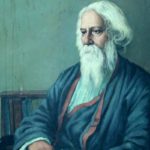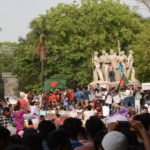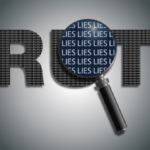Fabeha Monir is a journalist and photographer, an activist forever by innate attributes. Her creative platform focuses on vital themes of violence against women, human rights issues, global poverty, social development, war and civil society, genocide, cultural and heritage conservation, mysticism, indigenous cultures, migration and forced exile, oppression & dispossession in marginalized communities.
She is now intensively working on Rohingya issue. Here is her interview about ‘Exploring Humanity Though Photography’
Could you please introduce yourself?
I am professionally a journalist and photographer, an activist forever by innate attributes. As a photojournalist I work for Getty Images and represented by Women Photograph. I have been writing for BISTANDSAKTUELT- news on aid and development, Norway, almost six years now. My creative platform focuses on vital themes of violence against women, human rights issues, global poverty, social development, war and civil society, genocide, cultural and heritage conservation, mysticism, indigenous cultures, migration and forced exile, oppression & dispossession in marginalized communities.
Why did you decide to become a photographer? What inspired you to take photographs about issues and challenges?
I felt the urge to write and photograph about the sufferings of a soul. Photography is a start of process for me, my images invite dialogue, I want to stop the viewer and pause for moments. Presenting horror in your coffee table or screen is not what I deliberately want. I want you to feel, ask question, get angry and react. Each one of us have experienced different façade of joy, sorrow, sadness, grief, misery and the virtual happiness at some moment or other in life. I want to transform my visuals into feeling. There is a calling for humanity; every entity in this planet is connected with each other. If one is affected other is going to suffer somehow. This cycle of suffering is endless and ceaseless, unless we do something to change.

Your subjects are often experiencing extreme hardship and deprivation. How do you explain the importance of your work to these people?
I pour myself into every project I do. I have experienced nonverbal communication plays a huge role while explaining my purpose to the people I photographed. I have worked with LGBTQ community, Sex Workers, Acid victims, visually impaired, Rape survivors, Islamic Fundamentalists and many more, mostly on topic which requires time, truth and trust. My compassion, honest approach and tireless participation are primary components which let me to document lives of people who are endlessly facing hardship and deprivation. This is not my words which they trusted; they are seeing what I am doing, my personality, and attentiveness, everything I did they observed. They know I cannot do any miracle to change their hardship, but they feel I am doing right, documenting their stories and sharing with the world is needed. Many of my photography subjects can’t hear can’t speak. I learned sign language to communicate. Those who can’t see, often touched my face, held my hands. They accepted me with my mission. And I am very protective about the identity of my subjects, no matter how much time I spent in a project, if I feel slightest confusion that my story may bring difficulty on lives of these people, I simply remove my content. There is nothing valuable to me than the dignity of the people I portrayed.

You have shot some projects dealing with all sorts of different causes. How do you choose which cause you get involved with?
I take on issues that stir my passions about the state of humanity. I have an unimaginable access to people’s life; their openness brings with it an incredible sense of accountability to tell the reality but to also honor their stories. As the photographer, it’s challenging to make images that read quickly and are powerful, but have enough humanity and compassion so the viewer wants to learn more and participate in helping these people in need. I take pictures to enlighten people to something they are not aware of. If we keep taking the pictures and keep telling the stories, we can make it better. I really trust this.
Your photos are extremely raw and close to the subject, telling stories of very severe causes. Is it sometimes difficult to deal with these situations emotionally?
There is no separation between my life and work. And it’s easier to get inside a world than to leave it. There is no shield to prevent the heart; this journey will change you in some way. I find it immensely difficult to return to myself after communicating intensely. I want to understand how the world looks like to a visually impaired child. I am keen to know how it feels to clean sewerage every day for forty years. The more I want to know, I discover, how unique is everyone’s journey. When they invite me to visit their reality, I just don’t document, I participate equally to transform and interpret their spirit. Somehow, I have learned to embrace life, learned to return to my core.
How does the act of writing compare for you with photographing?
When you write you start with a bank page. It can be terrifying. With photography, it’s more of a matter of interpreting how to manage the information that is already there. I prefer to write first, because it allows me to enter into the territory which I know nothing. As soon as I have my script I know the place, its smell, and the unknown takes into the shape of a human. Moving images are equally important to me. I record sound of the places, I visit. Every alley I visited had something different to reveal. This discovery is fascinating.
What inspires your photography?
This brings a rare combination of uncountable, untitled component. Music, literature, art, silence, smell, fearlessness, unbridled creativity, emotions like anger and fear, knowing I haven’t even begun to see what I feel, knowing there is more out there, the inner light might actually be real but I’m nowhere near finding it, and most importantly conquering the craft of interpret someone’s life into visuals.
How would you describe your style or vision for taking photos?
I depict what I feel and write what I see. I want to be present during powerful human emotion. The camera allows me to experience that life. The people I photograph have their own tragedies yet they are blindfully beautiful. I feel my intense life experiences help me to form silent friendship with the people I photographed. Our collective scars become our collective freedom. I must say, I am made from all the people I’ve encountered and all the things I have experienced.
Why are female photojournalists so underrated in photography industry? Can you share your struggle as a female photojournalist?
Only 15 percent of photojournalists are women. That means that we largely are consuming news — whether about politics or entertainment or crime or sports — through a male perspective. Female visual journalists are still struggling to reach proportional numbers of representation in the industry. There’s major diversity problem in the photojournalism world. If we want to document people and places with nuance and sensitivity, we need to be doing it as a diverse community of storytellers. It’s crucial to highlight people that are putting conscious efforts into elevating diverse stories, not only women but people of color and local photographers.
What thoughts would you give to aspiring photographers?
Photographers need to look outside of photography. Photographers need to look to things like art, literature, print-making, design, and illustration and broaden their perspective in regard to what is being done in the greater creative world. We live in a world where people value photographers based on how many social sites followers they have and that just isn’t smart. Don’t lose your mission to be admired. Have a look into the larger picture. If you lose yourself in the rat race, finding your vision would be impossible. I don’t see James Nachtwey on social media seven days a week. We don’t hear from him every eight minutes. Put your primary effort to produce powerful work, and then invest time to build your network. Be calculative about finance, photography is expensive and the competition is unimaginable, building niche is the lifesaving key. The harder you work in the field the more respect you will get from the people in your photos. You prove that your work is not just a pastime. Engage, Slow down, take time, think and then act. Be original. Be truthful. Be bold.












